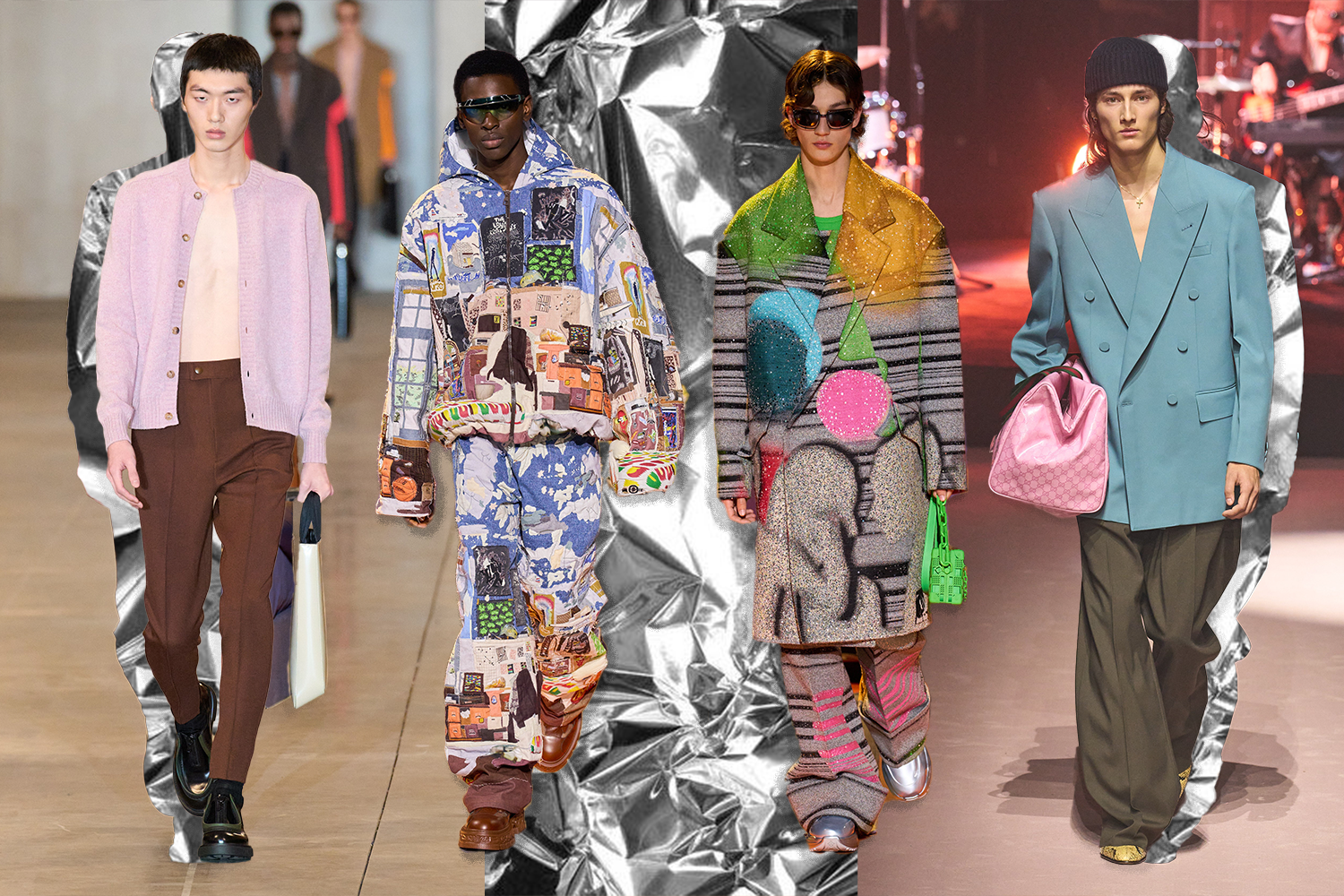Fashion Week Opts for a Less-Indulgent New Look
Graphic by Ruth Ellen Berry.
The fashion industry had a tumultuous end to 2022. Last November, Balenciaga was canceled over child endangerment claims. Then, the iconic teen-spirited designer Raf Simons shuttered his eponymous label after a culture-defining 27-year-run. Days after, Gucci’s creative director Alessandro Michele parted with the brand due to the company’s efforts to reinvigorate financial growth. And if November wasn’t crazy enough, Dame and punk legend Vivienne Westwood passed away in late December. Quite the series of unfortunate events.
The vanguards of creative freedom and freakiness had met their match. Demna, the creative director of Balenciaga, finally reached the limit of how much provocation and ironic fashion was acceptable. And if the nerd-chic opulence of Michele’s Gucci was no longer financially viable, where could fashion possibly go next?
All of these questions and doubts have manifested themselves in the current 2023 fashion week that is making the rounds in Europe.
Gucci showed its first collection sans-Michele earlier this month.
As expected, the maximalism and logo mania that defined Gucci for almost a decade was entirely erased. Instead, the Gucci in-house design team opted for luxurious essentials with a focus on tailoring. The show's opening look was a skinny white t-shirt paired with sleek trousers and a large messenger bag.
Voluminous trousers and hipster beanies defined Gucci’s new direction, though the heart of Michele felt absent.
Gucci wiped the slate clean. The rest of the post-Michele collection was eerily minimalist. A few looks played with interesting style ideas, like the maxi skirts and pleated denim. Mostly, the clothing provided a backdrop for the accessories that Gucci is known for.
Other collections have also felt simplified. Prada aptly titled its F/W 2023 men’s collection “Let’s Talk About Clothes.” The collection was full of simple suits, minute accents and humble outerwear. “We want to work really hard to make clothes that have a reality in this world,” explained co-creative director Raf Simons in a statement to Vogue.
Heavy coats and floating collars were the main silhouettes at Prada’s F/W 2023 show.
Even notably quirky brands like JW Anderson and Martine Rose leaned into simplicity this season. JW Anderson opened with models in underwear carrying rolls of fabric, in an effort to examine the meaning of clothing, starting all the way back from the material composition.
The opening looks of JW Anderson took reduction to the extreme with models dressed only in underwear.
The simplicity worked to Martine Rose’s benefit. Rose felt the most controlled and dialed in this season. Still soaked in reference and nostalgia, the clothes were wearable and perfectly styled.
In typical Martine Rose fashion, Rose focused on archetypes and characters for F/W 2023.
So far this season hasn’t presented the far-out, pretentious musings that typically come with high fashion. Designers are presenting clothes that are wearable, and possibly veering toward generic.
People want to believe in fashion as an art form, but luxury clothing is first and foremost a product. This new direction isn’t a creative choice but is mostly influenced by the current economy.
The media cycle is buzzing with debates about how soon the recession will be or if we are already experiencing one. The rising inflation rates are certainly not a good sign. Current fashion collections are underpinned by businesses’ anticipation of a recession. High fashion brands are beginning to prioritize financial growth and stability over aesthetic meaning.
More than ever, fashion feels like a product. It always has been, sure, but the illusion of luxury clothing as an art has been endearing and mesmerizing for the last few years.
This is not to trivialize the artistic value of minimalism. Straightforward designs are often conflated with a lack of artistic vision, which is false. One only has to look at Martin Margiela’s Hermès from the late nineties or Phoebe Philo’s Céline from the 2010’s. Simple clothes can be deceptive.
Martin Margiela’s Hermès (left) and Philo’s Céline (right) are exceptional examples of simplicity done right.
The difference this time around is that simplicity is less artistically driven. Gucci’s last collection has no clear voice; any piece from this show can be from a handful of other designers.
It’s hard to watch the brilliance of Michele be tossed away in an instant. His clothes were disruptive and difficult. Even the people who despised his designs couldn’t deny that they became a cultural touchstone.
Fashion walks a fine line between consumable goods and art. Creative directors want to make what is authentic to their vision while the business side wants to push promotable, easily sellable items. Neither end of the spectrum is wrong. Without money, there would be no platform for art, but without the artistic vision, there would be no worthwhile product.
The shows at Paris fashion week have brought back the energy that Milan was missing. Rick Owens presented his usual drama with nods toward simplicity. He utilized his trademark extreme shoulders and avant-garde silhouettes in inspiring new ways.
Rick Owens was completely in his element with his typical demented, absurd styles.
Louis Vuitton’s return, with Colm Dillane of KidSuper offering up designs for the show, was a success. For the first time since Virgil Abloh’s passing, the fashion house felt like it had a new voice. Abloh’s influence was still clear, but this collection was more an homage than the usual copy-paste. Dillane brought a thoughtful, energetic perspective to the future of Louis Vuitton. The creative director role remains empty, but this collection made a strong case for the crafty New York independent.
Louis Vuitton’s fascinating tailoring and stellar use of graphics were a highlight of fashion week.
Creativity is certainly not dead. Fashion is experiencing the growing pains that come with change. Designers will learn to adapt to the times and the clothes will change as a result. Long-established design trends have phased out, but now comes the promise of something new.








